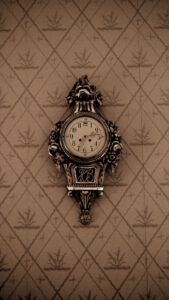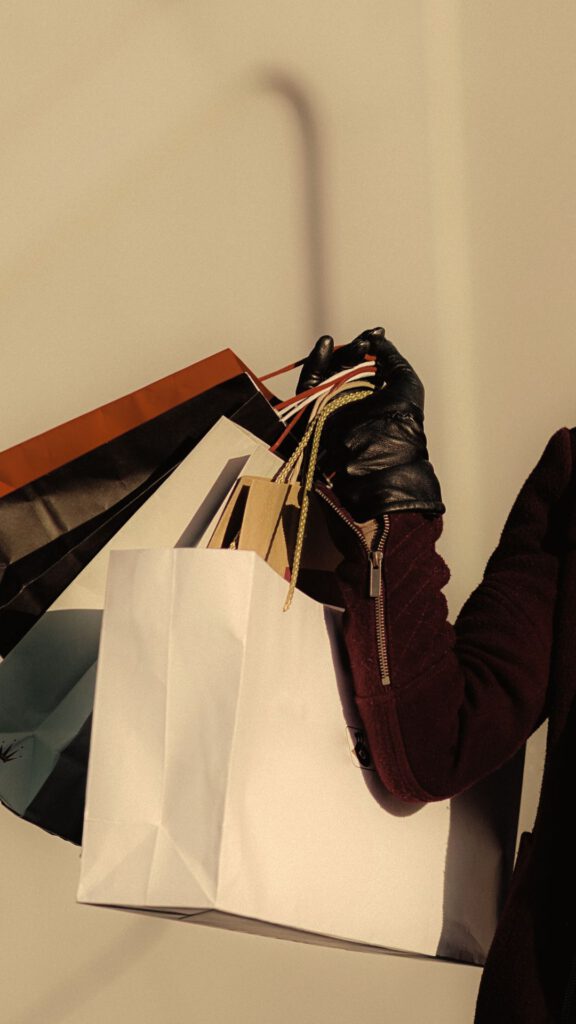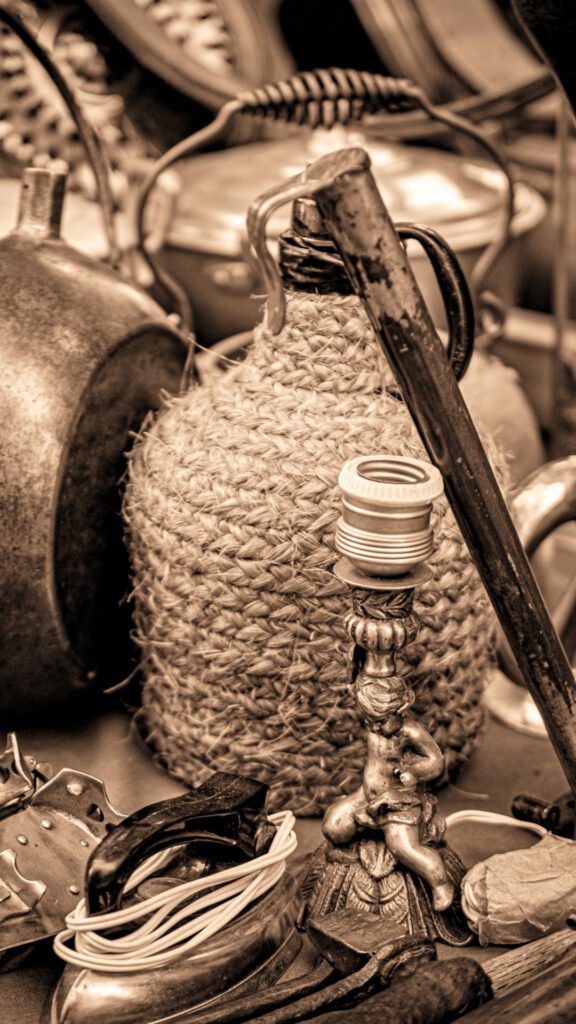Affiliate Disclosure
Some of the links on this page may be affiliate links. As an Amazon Associate, I earn from qualifying sales from these links. If you make a purchase or sign up for a membership through these links, I will receive a small commission. This will not cause any additional costs for you. This income helps us to run this website and especially the blog for you.
Introduction
Wallpaper is a fascinating element of interior design, which has been used for centuries to decorate walls and beautify rooms. In this blog post we will take an in-depth look at wallpapers, their origins, the oldest known wallpapers, famous designers of wallpapers, popular patterns by eras, types of manufacture and differences in materials. Let’s dive into the world of wallpaper!
The origin of wallpaper
The history of wallpaper goes back a long way. Already in ancient Egypt, walls were decorated with papyrus and silk to express beauty and luxury. Over the centuries, different techniques and materials for wallpaper developed, from hand-painted murals to printed papers.
The oldest known wallpapers
Some of the oldest known wallpapers come from ancient China and were used in royal palaces and temples. These wallpapers were masterfully hand-painted and featured ornate motifs and scenes. The amazing beauty and craftsmanship of these ancient wallpapers laid the foundation for modern wallpaper design.
Here are five famous historic buildings where antique wallpaper still exists today:
- Palace of Versailles, France: The Palace of Versailles houses an impressive collection of historic wallpapers, including some from the 18th century. The wallpapers in the palace reflect the sumptuous style of the French royal court.
- Alhambra, Spain: The Alhambra in Granada is known for its stunning Moorish architecture. Here you can still find beautiful Arabic wallpapers decorated with ornate geometric patterns and floral motifs.
- Château de Fontainebleau, France: Fontainebleau Castle is another French castle with a rich history and magnificent wallpapers. Particularly noteworthy are the wallpapers in the Napoleonic apartment, designed by Charles Le Brun.
- Hampton Court Palace, England: Hampton Court Palace is an impressive Tudor castle known for its historic wallpaper. In the Great Watching Chamber, visitors can admire wallpapers made in the 17th century.
- Himeji Castle, Japan: Himeji Castle is one of the oldest and best preserved castles in Japan. Traditional Japanese wallpaper known as “fusuma” can be seen in some of the rooms in the castle. These wallpapers are often decorated with hand-painted motifs and tell stories from Japanese history.
These historic buildings offer a fascinating look at how antique wallpaper has been used and preserved over the centuries.
Famous designers of wallpaper
Throughout history, talented designers have shaped the world of wallpaper with their unique creations. Names like William Morris, Florence Broadhurst and Zuber & Cie are inextricably linked to wallpaper design. Their lives and style had a significant impact on the wallpaper industry.
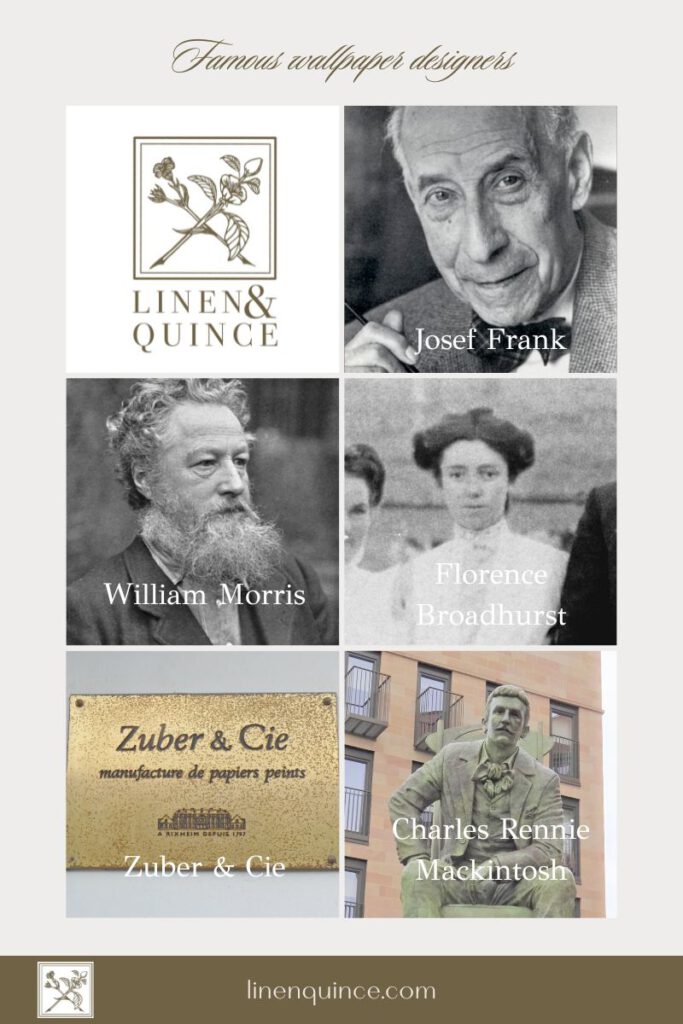
- William Morris:
- Life: William Morris was a British designer, writer and socialist who lived from 1834 to 1896.
- Influence: He was a major proponent of the Arts and Crafts movement, championing handmade products and traditional crafts.
- Famous patterns: his wallpaper patterns were characterized by floral motifs, natural elements and symmetrical designs.
- Florence Broadhurst:
- Life: Florence Broadhurst was an Australian designer who lived from 1899 to 1977.
- Influence: She was known for her creative and colorful designs inspired by her time in Asia and her passion for art and fashion.
- Famous patterns: her wallpaper patterns included abstract shapes, geometric patterns and exotic motifs.
- Zuber & Cie:
- Life: Zuber & Cie is a French wallpaper company that has existed since 1797. It has its roots in a German wallpaper factory ( “Nicolas Dolfus & Cie”, from Mulhouse). In this the Swiss employee Jean Zuber had printed the first wallpaper webs. Until 1968, the company was still under the management of a direct descendant of Jean Zuber.
- Influence: The company is known for its hand-printed wallpaper and its innovative manufacturing techniques.
- Famous patterns: Zuber & Cie’s famous wallpaper patterns include landscape scenes, exotic motifs and historical reproductions.
- Josef Frank:
- Life: Josef Frank was an Austrian-Swedish architect and designer who lived from 1885 to 1967.
- Influence: He was a pioneer of modern design and known for his colorful and playful patterns.
- Famous patterns: his wallpaper patterns included abstract shapes, botanical motifs and geometric designs.
- Charles Rennie Mackintosh:
- Life: Charles Rennie Mackintosh was a Scottish architect and designer who lived from 1868 to 1928.
- Influence: He was an important representative of Art Nouveau and was known for his organic forms and attention to detail.
- Famous patterns: his wallpaper patterns often featured floral motifs, Celtic symbols and geometric elements.
Popular patterns by epochs
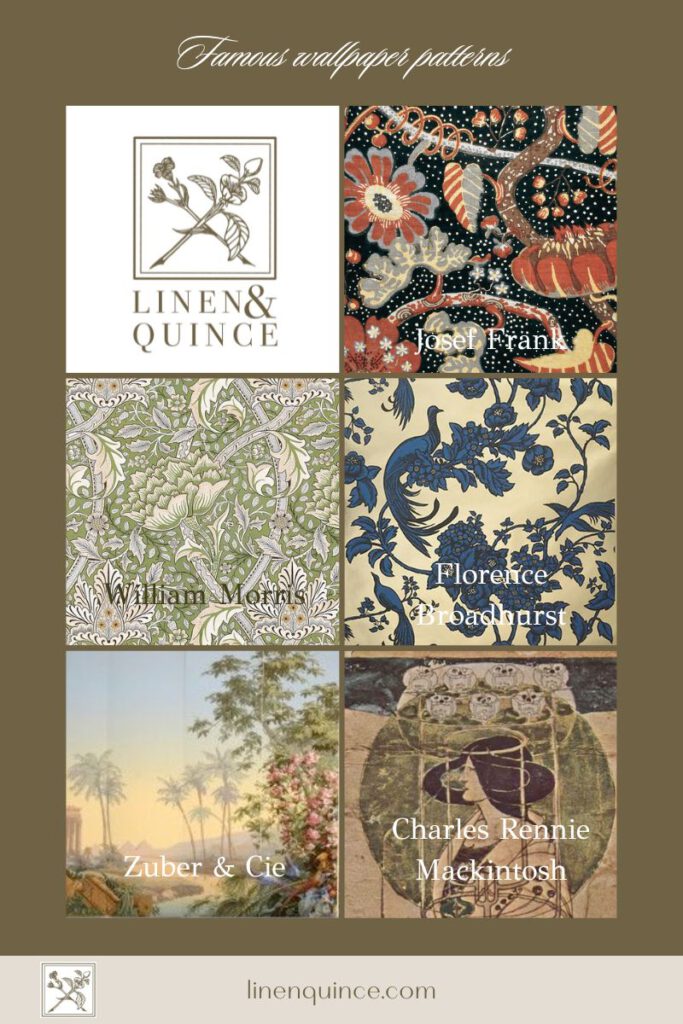
Wallpaper patterns have changed over time and are influenced by the trends and styles of their respective eras. From the opulent Baroque patterns to the geometric patterns of the Art Deco era, there are a variety of designs that reflect the history and culture of their time. Here are five of the most popular wallpaper patterns by era:
- Baroque patterns: Opulent and sumptuous patterns popular in the 17th and 18th centuries, often containing floral elements, vines and ornaments.
- Rococo patterns: light and playful patterns that were popular in the 18th century. They were characterized by delicate floral motifs, bows and asymmetrical designs.
- Art Nouveau patterns: Inspired by nature, Art Nouveau patterns were popular in the late 19th and early 20th centuries. They included organic shapes, curved lines and floral motifs.
- Art Deco patterns: Geometric patterns with clean lines and sharp angles that were popular in the 1920s and 1930s. They reflected the modern and avant-garde style of the time.
- Retro patterns: these patterns became popular in the 1950s and 1960s and included abstract shapes, vibrant colors and futuristic designs.
Each of these patterns had a unique influence on the interior design of their respective eras and is still appreciated by many people today.
Types of manufacture and differences in materials
Modern wallpapers are made in various ways, from traditional printing techniques to digital patterns. In addition, there are a variety of materials used for wallpaper, such as paper, vinyl, non-woven or textiles. There are different ways of manufacturing wallpaper, both historical and modern methods. Here is some more detailed information about the manufacturing methods and the advantages and disadvantages:
- Historic Manufacturing Types:
- Hand painted wallpaper: In the past, wallpapers were painted by hand, either on paper or silk. The advantage of this method was the ability to create unique and detailed designs. However, this was a time-consuming and expensive method.
- Block printing: This method became popular in the 18th century. Wooden blocks were carved with patterns and then printed on paper. The advantage was the reproducibility of the patterns, but the complexity and detail were limited.
- Screen printing: Another historical method was screen printing, where ink was printed onto the paper through a fine mesh screen. This allowed the use of multiple colors and more detailed patterns.
- Modern manufacturing methods:
- Offset printing: This is the most common method of producing wallpaper today. It is a machine printing process where colors are applied to the paper in layers. The advantage of offset printing is high speed and efficiency, but the level of detail can be less than hand-painted or historical methods.
- Digital printing: With the advancement of technology, digital printing is also becoming more popular. Here, wallpaper patterns are printed directly from a computer onto the paper. This method allows for high detail and the use of complex gradients and patterns. The disadvantage is that the cost of digital printing can be higher.
- Embossing: Embossing is the process of stamping patterns onto the paper to create a textured surface. This can add an interesting dimension and texture to the wallpaper.
Advantages and disadvantages:
- Hand-painted and historical methods offer unique and detailed designs, but can be expensive and time-consuming.
- Modern manufacturing methods such as offset printing and digital printing allow for high speed and efficiency, but the level of detail can be lower.
- Digital printing offers the possibility of complex gradients and patterns, but can be more costly.
- Embossed printing gives the wallpaper a textured finish, but can be more expensive.
It is important to note that historical manufacturing methods are often based on traditional materials such as paper or silk, while modern manufacturing methods can use a variety of materials such as paper, vinyl, non-woven or textiles. The choice of material can have an impact on the durability, care and application of the wallpaper.
The different materials:
- Non-woven wallpaper: Non-woven wallpapers are also a durable option. They are made of a mixture of cellulose and textile fibers reinforced with a binder. Non-woven wallpapers are durable, tear-resistant and easy to handle. They are also dimensionally stable, which means that they do not stretch or shrink when applied.
- Textile wallpapers: Textile wallpapers are made of various fabrics such as silk, linen or cotton. They give the rooms an elegant and luxurious look. Textile wallpapers are robust, provide good sound insulation and are usually flame retardant.
- Natural fiber wallpapers: Natural fiber wallpapers are made from natural materials such as grass, bamboo, hemp or sisal. They are environmentally friendly, sustainable and offer an organic texture. Natural fiber wallpapers are usually breathable and moisture regulating.
- Vinyl wallpaper: Vinyl wallpapers are one of the most popular and durable options. They consist of a vinyl coating on a paper or non-woven base. Vinyl wallpapers are water repellent, washable and can be used in high traffic areas. They also offer good resistance to wear, abrasion and fading. However, there are some potential drawbacks with vinyl wallpaper, especially in terms of health and the environment. Here are some possible disadvantages:
- VOC Emissions: Vinyl wallpaper can emit volatile organic compounds (VOCs), especially when new. These VOCs can lead to a deterioration of indoor air quality and cause health problems such as respiratory irritation and allergic reactions.
- Environmental impact: Vinyl is a synthetic material made from petrochemical substances. The production of vinyl wallpaper requires the use of energy and natural resources. In addition, the disposal or incineration of vinyl wallpaper can release harmful chemicals that pollute the environment.
- Difficult to recycle: Vinyl wallpaper is often difficult to recycle due to its composition and coating. This means that they usually end up in landfills and contribute to the waste load.Durability: Although vinyl wallpaper is considered durable, it can wear out or become damaged over time. In such cases, vinyl wallpaper can be difficult to repair and may need to be completely replaced.
It’s important to consider these potential drawbacks when choosing wallpaper. If you’re concerned about vinyl’s impact on health and the environment, especially if you may have young children who may be even more sensitive to VOCs, more eco-friendly alternatives like non-woven wallpaper or natural fiber wallpaper may be better for you. These options are usually vinyl-free and offer a more sustainable choice for your home.
The cost
Prices for wallpaper can vary depending on the material, brand, design and quality. The average price per square meter (sqm) of a high-quality and durable wallpaper is usually between 20 euros and 50 euros. However, there are also luxurious or specially made wallpaper, which can be significantly more expensive.
Those who can not or do not want to wallpaper themselves and prefer to hire a professional to do the wallpapering, must also include costs for a painter.
The hourly wage of a painter can vary depending on the region, experience and type of work. On average, the hourly wage of a painter in Germany is between 30 euros and 50 euros. However, it is important to note that even these prices only serve as a rough guide.
Wallpapers are in sum as sometimes an expensive fun, which is probably why they seem to have lost popularity in recent decades. In most German apartments, only the cheaper woodchip wallpaper is wallpapered and then painted.
However, a while ago a contrary trend seems to have started moving. especially in social media like Pinterest and Instagram I see more and more often again e.g. floral wallpapers and even historical patterns, e.g. by William Morris seem to experience a revival.
Conclusion
Wallpaper is not just a simple wall covering, but an expression of art, culture and individual style. Their history, designs and manufacture are fascinating and offer us a glimpse into how interior design has evolved over time. Whether you’re a fan of classic patterns or modern designs, wallpaper somehow has a timeless appeal. I hope I could inspire you with this post maybe instead of the usual woodchip to reach for a more interesting wallpaper. How do you find pattern wallpaper? Can you imagine wallpapering a room or do you prefer to paint your walls in one color? Feel free to let me know in the comments.
Have a wonderful weekend!
All the love
Christina
“This wallpaper is terrible, one of us will have to go.”
Oscar Wilde
Share this post:

We’re excited
to share our news with you!
Would you like to receive information about our latest articles and our latest products directly in your mailbox?
Sign up for our newsletter!
We’d love to keep you in the loop.
About the author
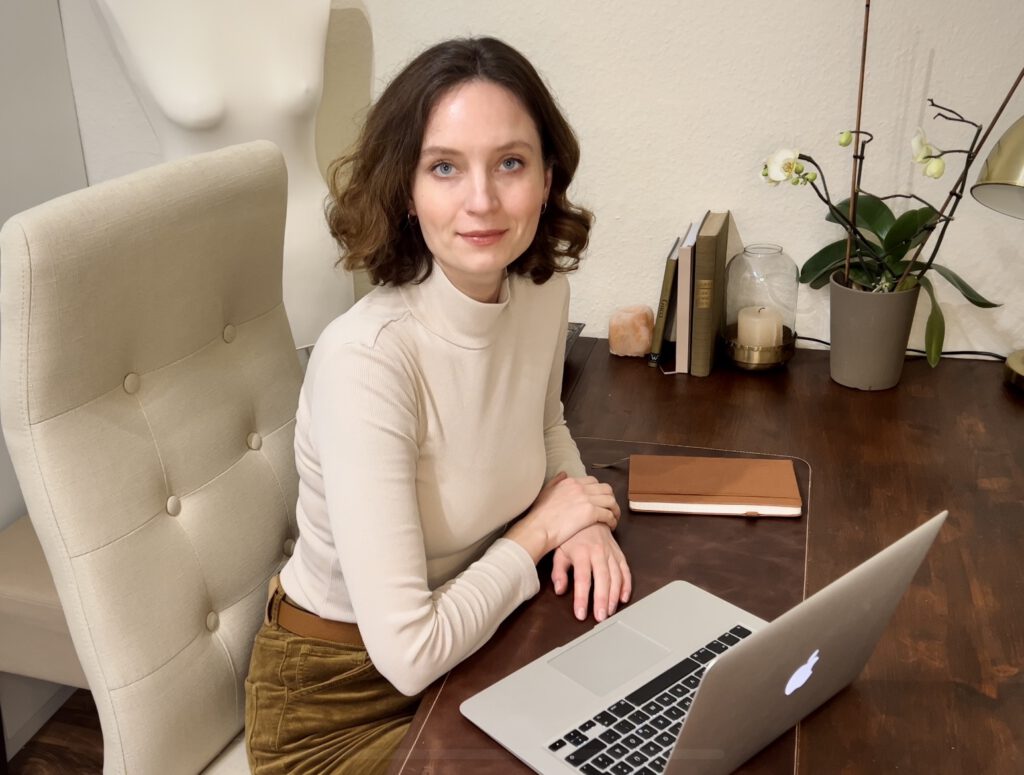
Christina Ernst is founder and CEO of Linen & Quince. She is also a designer, author and real estate expert. She shares her experiences and knowledge not only on our Linen & Quince blog, but also on her personal blog, christinaernst.net , where she writes about financial knowledge, starting a business, real estate knowledge and personal development. She loves interior design, art, antiques, as well as elegant, sustainable and high-quality fashion.

